Car manufacturers depend on 3D printing technologies today to reduce research and development costs, and produce special or complex end-use components. Additive manufacturing not only enables rapid revisions and alterations without the delays and expenses common with conventional manufacturing methods, but it also lets car engineers reimagine design and supercharge performance.
So, what are automobile manufacturers actually 3D printing and why? Here are the latest developments in the industry, from powerhouse carmakers turning out millions of vehicles a year, to smaller, dedicated firms producing bespoke creations for select clientele.
2020's Developments of the Year
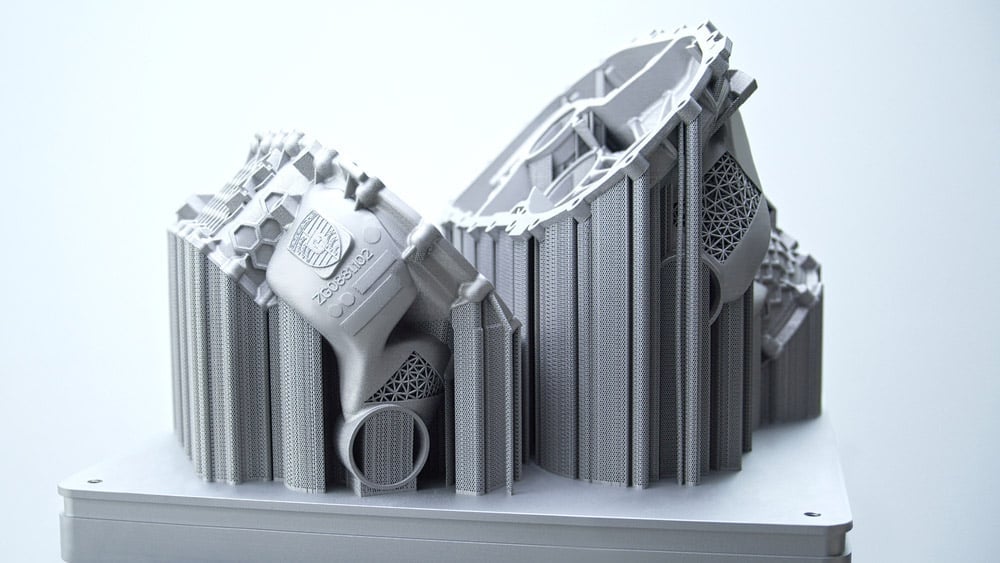
2020 saw a number of hugely interesting and exciting developments in additive manufacturing from new car parts to new additive manufacturing factories.
Firstly, there was Porsche, which 3D printed engine pistons for its 911 GT2 RS, a high-performance car famed for its ability to make the hairs on the back of your neck stand up. By 3D printing engine pistons, the Stuttgart-based manufacturer, known for the performance of its vehicles, was able to extract an extra 30-horsepower from the engine. If that wasn’t enough, the company also printed an entire E-drive powertrain housing (pictured) on a huge 600 cubic millimeter printer from SLM Solutions Group.
BMW opened its new Additive Manufacturing Campus just North of Munich, Germany, in the summer of 2020, too. With more than 50 industrial 3D printers on site, the campus is expected to play a major role in the development of production components and R&D projects going forward. Also, going big was American automaker General Motors, which cut the ribbon on its new 15,000-square-foot Additive Industrialization Center in suburban Detroit in late 2020. One goal of the new center is to “productionize” the technology and make it a cornerstone of GM vehicle development and manufacturing, the company says.
Lastly, there was BAC. Briggs Automotive Company released a new generation of the Mono, a single seater supercar that’s road legal. While the company is relatively secretive about which parts are 3D printed and how, we do know that there are more than 40 3D printed components in each new Mono. The company is heavily invested in additive manufacturing, so expect further generations down to the road to contain even more.
BAC – 40 Printed Parts for One Car
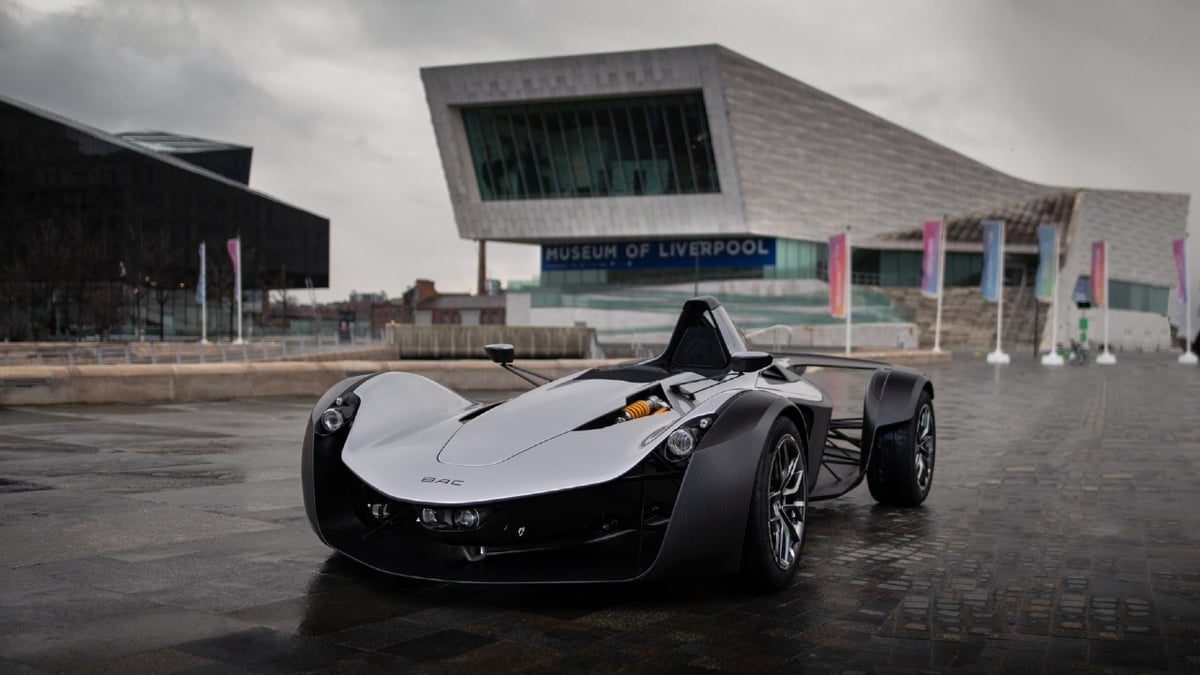
British supercar manufacturer Briggs Automotive Company (BAC) released its new generation of Mono in 2020, an uncompromising high-performance machine quite unlike anything else legal on the road. The single-seater supercar is capable of 170 mph, 62 of which come up from a standstill in a staggering 2.3-seconds. It also possesses more than 40 3D printed parts, helping it to achieve its ultra-light 570 kg weight.
BAC teamed with materials supplier DSM and software partner AutoDesk to develop the new Mono, printing parts using what BAC says were “high-performance polymers”. The end result was a reduction in time from the design to manufacturer process of more complex geometrical components, and crucially for this car, more weight saved in the vehicle.
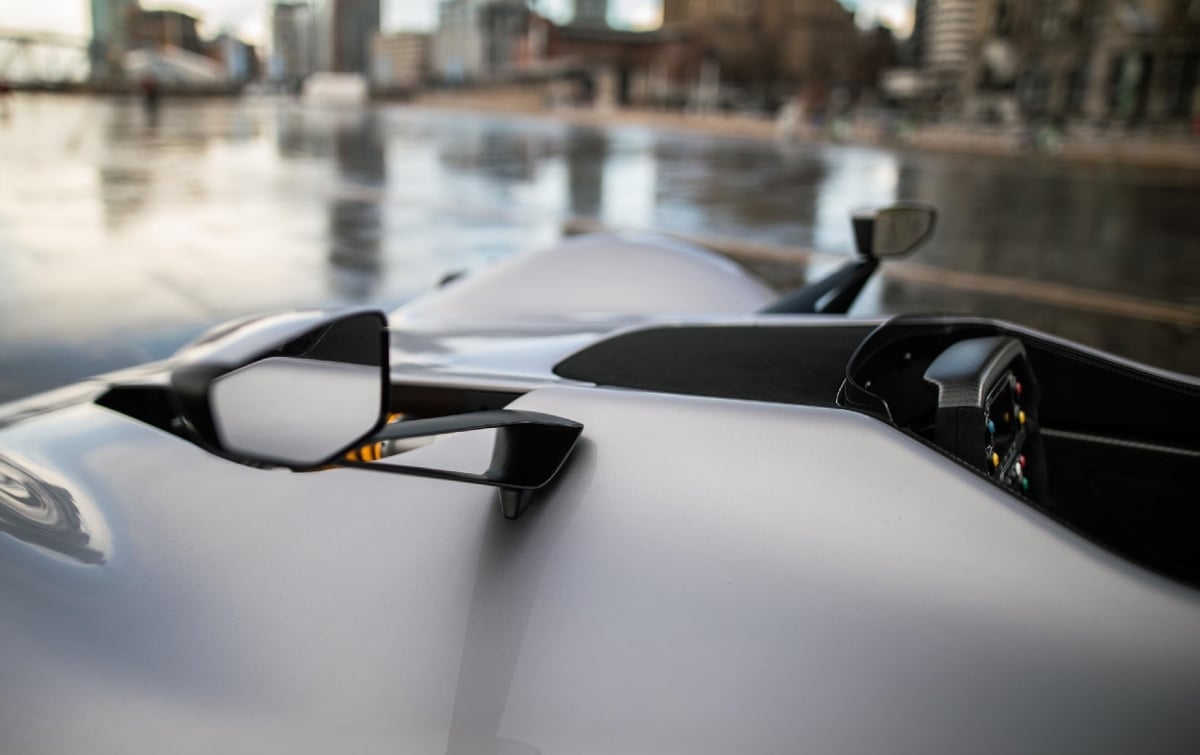
In previous projects, BAC has used Stratasys F900 FDM printers and Novamid ID 1030-CF10 carbon fiber-filled filament, as well as Somos WaterShed XC 11122 resin, which produces optically-clear parts.
Final 3D printed components on the new Mono include front and rear light surrounds, mirror arms and mirror housing, front hatch hinges, the front hatch latch mechanism and engine inlet components. BAC has also used Graphene-enhanced carbon fibre throughout the car, something that is thought to be a world first.
BMW – 3D Printing Factory Opens
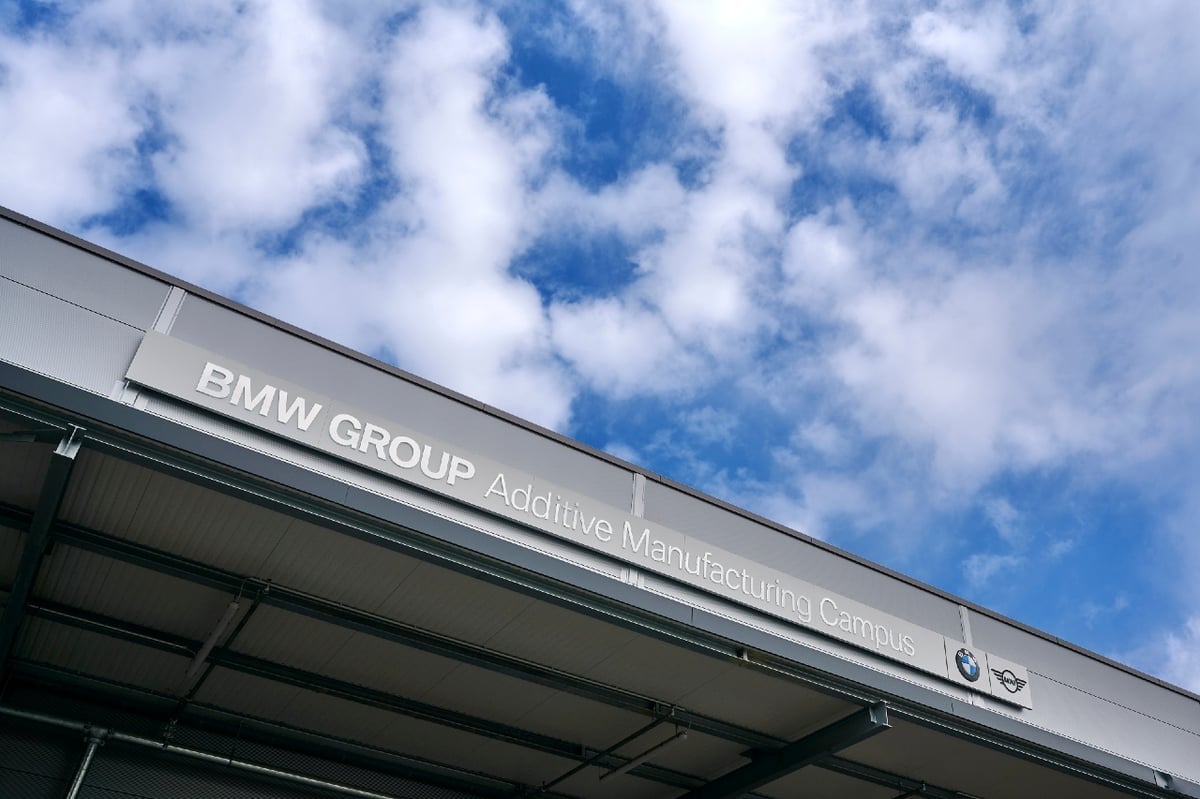
BMW is considered one of the world’s leading automotive brands when it comes to additive manufacturing. In 2019, the company produced more than 300,000 3D printed parts for its brands, BMW, Mini and Rolls-Royce.
In the summer of 2020, the company opened a new 3D printing campus just outside of Munich, at a cost of around $18-million.
“Over the last 30 years or so, the BMW Group has developed comprehensive (additive manufacturing) skills, which we’ll continue to enhance on our new campus, which has the latest machines and technologies,” says Jens Ertel, the director of the Additive Manufacturing Campus. “In addition, we develop and design components that are faster to produce than by conventional means, offer flexibility in terms of their form, and are also more functional.”
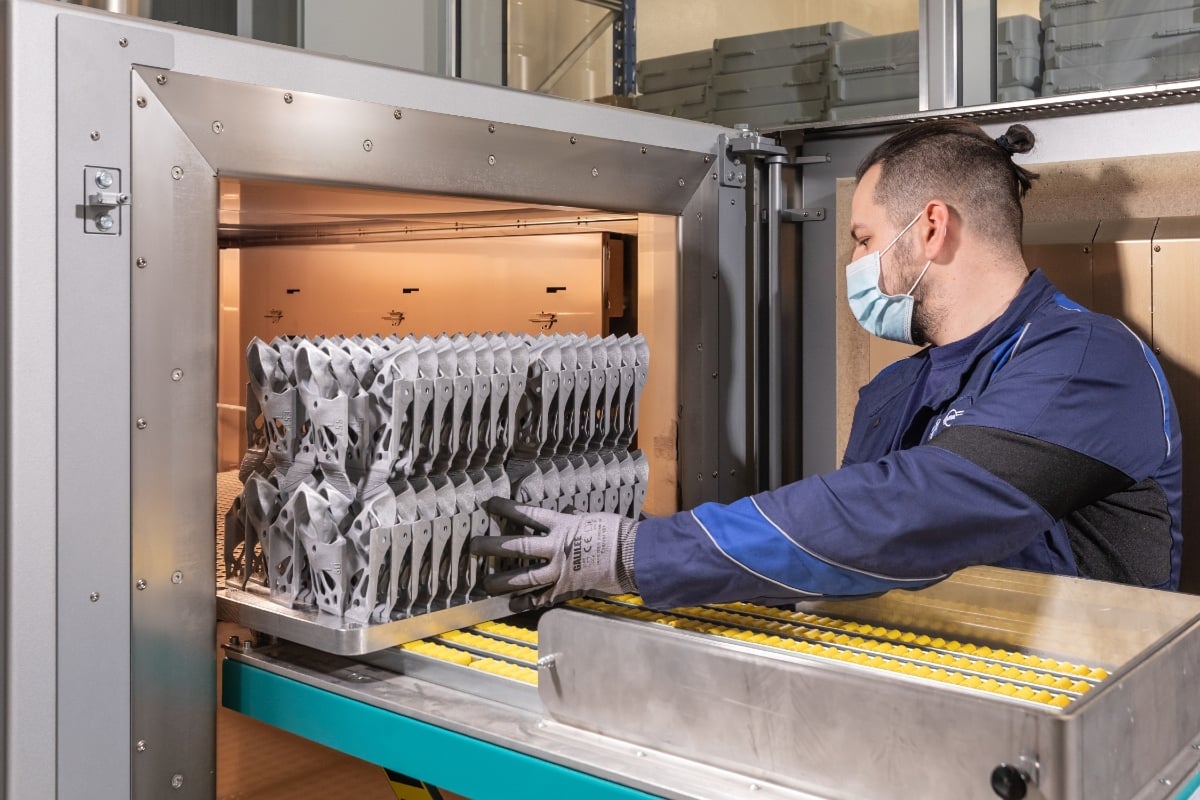
BMW is consolidating its talents for additive manufacturing under one roof at its campus, which features more than 50 industrial 3D printers capable of producing parts in both metal and plastic. That’s the same number as the company has around the rest of its global operations.
“We are working hard to mature additive manufacturing fully and benefit from it as far as possible throughout the product life-cycle, from the first vehicle concept through to production, aftersales and its use in classic vehicles,” says Ertel.
With many new cars on the way across its diverse brands, the future of 3D printing with BMW seems particularly promising.
Bugatti – Printed Titanium Aids Extreme Performance

To say that Bugatti produces luxury, high-performance cars is both correct and incorrect at the same time. Its cars are quite unlike anything else on the road, vehicles that cost multiple millions of dollars and that all come with an absolutely staggering centrepiece – an 8.0-litre, 16-cylinder quad-turbocharged engine often tuned to produce in excess of 1,500-horsepower.
In recent years, Bugatti has been using metal additive manufacturing, with its testing of a spectacular 3D printed titanium brake caliper.
The latter half of 2020 saw Bugatti begin production of the Chiron Pur Sport, a slightly lighter and nimbler, handling-focused version of the standard Chiron. Just 60 are being produced, each priced at around $3.6-million.
Part of the new Chiron Pur Sport is 3D printed of course, this time it’s a large titanium exhaust tail pipe, highly resistant to temperature and very light thanks to the benefits of the thin walls that 3D printing can achieve. This part was produced by APWORKS, a company based near Munich, Germany that specializes in complex metal parts made via additive manufacturing.

Bugatti has another baby on the way too, its most extreme creation to date – the Bolide. This track-focused monster produces 1,850-horsepower and weighs just 1,240 kg, giving it an unbelievable power-to-weight ratio of 0.67 kg per horsepower. It’s still in development right now, but it also uses 3D printed parts in order to achieve its low weight. Testing in the real world hasn’t yet begun, but Bugatti’s sophisticated simulation software thinks it should be able to reach speeds in excess of 310 mph. Whether or not this vehicle will go into series production is still undecided, however.
Like the Chiron Pur Sport, the Bolide uses 3D printed titanium parts to reduce weight and improve strength. All of the screw and fastening elements of the Bolide are made of titanium and Bugatti also uses what it describes as “hybrid” components, consisting of carbon fibre and 3D printed titanium to achieve incredibly strong and high-temperature resistant parts. Bugatti now says it can print as fine as 0.1 mm and its technological innovation recently helped it develop a new pushrod for the Bolide. The pushrod is a pressure-loaded coupling rod in the chassis area made of 3D printed hollow Titanium. The incredible thing about it is that is weighs just 100 grams, but can deal with forces of up to 3.5 tons.
Although Bugatti makes machines only for the very lucky few, the Alsace-based firm really pushes the boundaries of what’s possible, and 3D printing is crucial to the incredible statistics its cars are capable of.
Cadillac – 3D Printing for Gearbox Dev
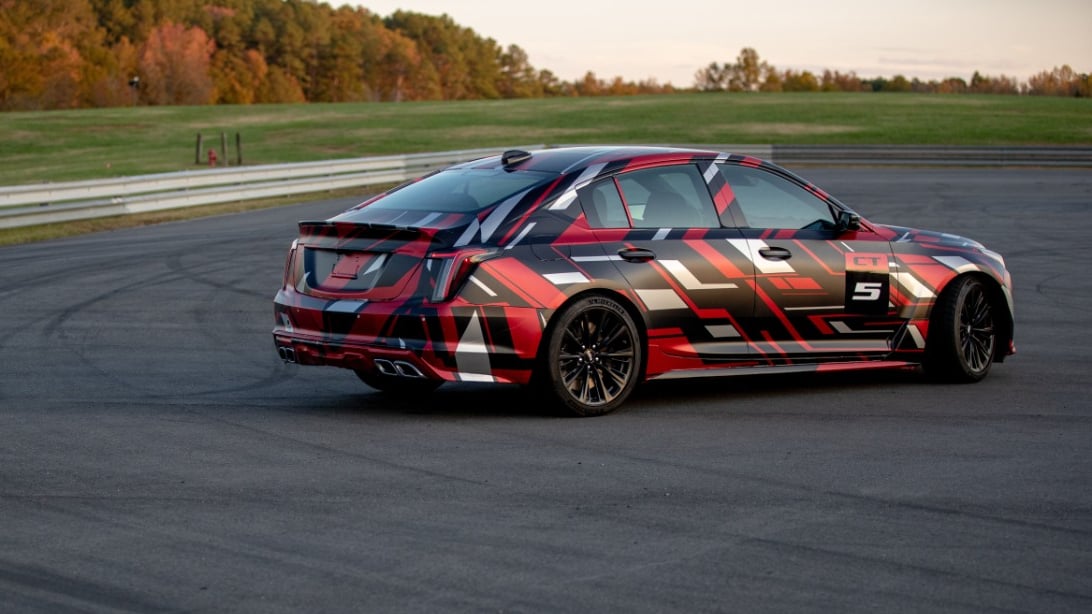
Cadillac, that great rose of American motoring, is gearing up to release two vehicles that will see the debut of the company’s first 3D printed vehicle parts.
The vehicles in question are the CT4-V and CT5-V “Blackwing” models, cars that Cadillac says will be the “pinnacle of Cadillac performance”. These much-anticipated high-performance saloons have a number of eye-catching and exciting features, and we’d expect more to be revealed closer to the expected summer ‘21 launches.
In the Blackwings, additive manufacturing was used to help develop the new 6-speed manual transmission, a standard feature in both cars. This helped speed up development and reduce costs. You won’t forget how your gearbox was developed either, as Cadillac has included a rather fetching 3D printed emblem for the manual shifter.
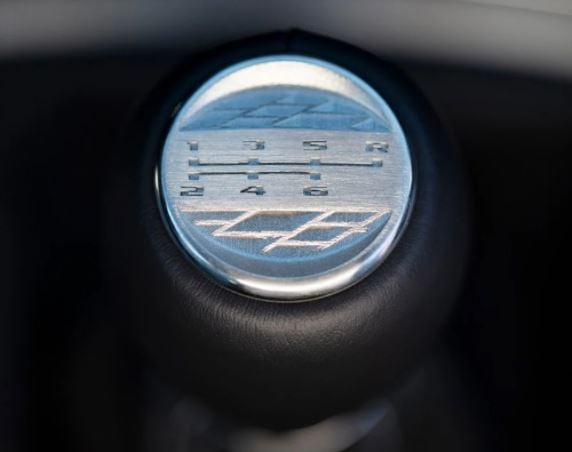
The manual gearbox is sure to satisfy passionate driving enthusiasts, people who will scrutinize the finest details of their car. How will it fare? Expect to find out later this year.
Looking after the project is Mirza Grebovic, Cadillac performance variant manager. “A lot of work went into making the manual possible in both vehicles. It’s something we know V-Series buyers want and it’s something we knew we had to have, so we used innovative processes to make it happen.” Cadillac claims the new transmission is both quieter and more durable than previous versions and 3D printed components will also feature as HVAC ducts and as an electrical harness bracket.
Chevrolet – 75% 3D Printed Prototype

Chevrolet, like several other car companies, was busy in 2020 utilising its additive manufacturing facilities to provide face shields for medical personnel, but it also managed to build a new Corvette C8 prototype made from 75% 3D printed parts.
There are always a lot of eyes on Chevrolet when a new Corvette is announced, but the C8 has gone down very well with critics, who’ve praised its impressive performance and attractive pricing, as well as the much-discussed move to a mid-engined layout.
With the prototype in question, Chevrolet’s goal was to have essentially a life-size model of the final product to assemble and disassemble, to ensure that everything was easy to put together and all parts of the car were accessible during the assembly procedures. A similar approach was also used to develop a prototype for markets that drive on the other side of the road, such as the UK and Japan.
3D printed parts were also used during the initial prototyping stage of the folding metal hardtop to gauge whether or not the component folded and fitted correctly. All-in-all, these processes helped to speed up the development time of the new Corvette.
FCA – 3D Printing a World First
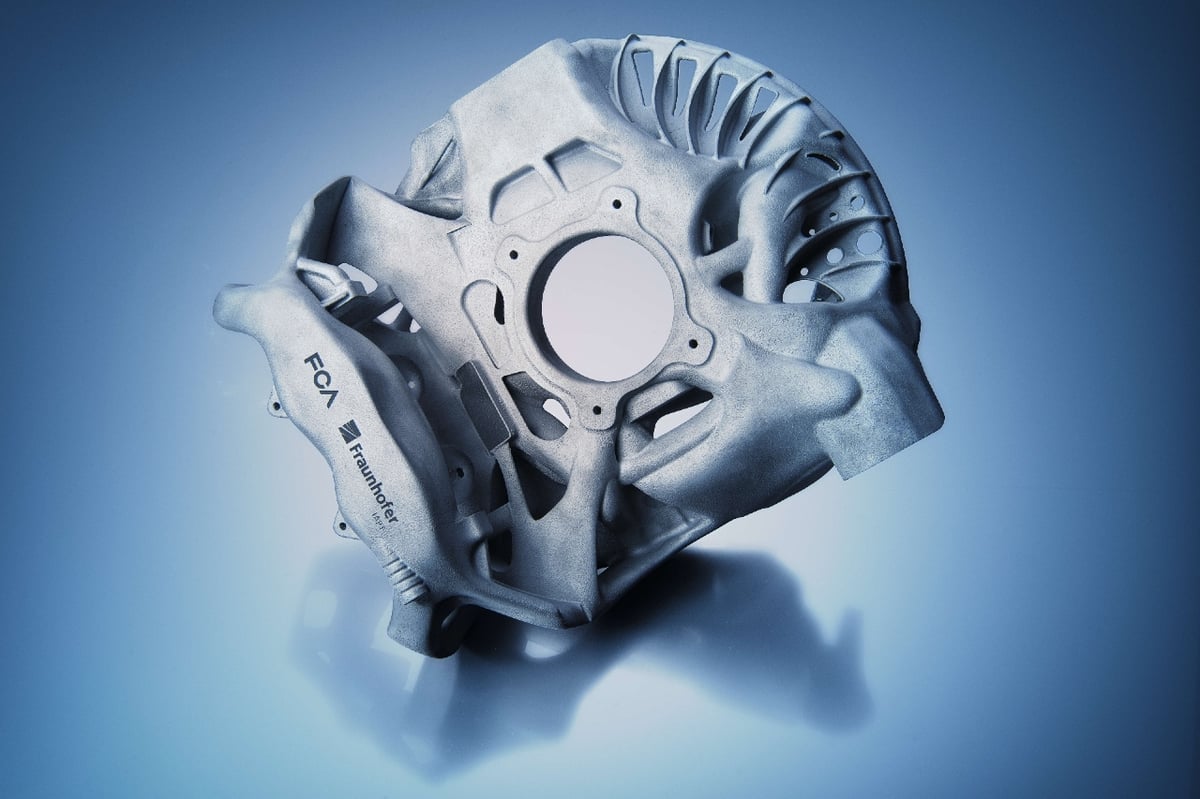
Fiat Chrysler Automobiles (known widely as FCA) joined forces with Germany’s Fraunhofer Society to produce a stunning 3D print, which, as of early 2021, is into the testing phase. The part in question is highly ambitious, a never-before-seen fusion of wheel suspension and brake caliper into one entirely new component.
According to the Fraunhofer Society – one of the world’s leading research organizations – components making up the traditionally manufactured wheel suspension and brake caliper amounts to 12 individual parts. Those components are manufactured individually and then assembled using screws, seals and washers to form the complete assembly at a rather high cost to both time and money. The 3D printed component is just one single piece, bionically optimized and 36% lighter. It also should prove stronger and perform better in stress and vibration tests, something that could well be proven when testing concludes.
For now, we can just admire the idea. This suspension and integrated brake caliper has never been done before. Will it make it into a series production vehicle? That’s the idea, and if you look at FCA’s portfolio of brands, it makes sense with some more than others… keep your eyes peeled on this one.
Ford – 3D Printing Assisted Quality Control

It seems odd to think about it, but Ford actually began using 3D printers way back in 1986. Since then, the company estimates that it has produced more than half a million 3D printed parts that have saved it billions of dollars in R&D costs as well as millions of hours of working time.
Currently, Ford is said to possess more than 30 industrial-grade 3D printers from the likes of Stratasys, HP, Carbon, EOS, Desktop Metal, and SLM Solutions at its Additive Manufacturing Center located in Redford, a suburb of Detroit. The facility employs more than 100 people and was said to cost in the region of $45-million when it was completed in 2018.
Meanwhile, at Ford’s body and assembly plant in Valencia, Spain, engineers are using stereolithography 3D printers from Formlabs to print parts used in the quality control of engines. “It was the first time that we used 3D printing for this purpose and we are very happy with the result,” says Carlos Cambralla, a Reliability and Maintenance Engineer at Ford Valencia.
So far, Ford has put at least two 3D printed parts into production vehicles. In the Shelby Mustang, an EPB bracket was printed, saving prototyping costs and reducing the weight of the component by 60%. Meanwhile, Ford’s high-performance Raptor pick-up truck needed a delete plug. Ford 3D printed this component, creating 14 iterations in under 20 days and saving huge sums on tooling costs.
General Motors – New 3D Printing Facility Opens

General Motors is the giant behind GMC, Buick, Cadillac and Chevrolet and it has invested heavily in additive manufacturing during 2020. In addition to the purchasing of 17 Stratasys FDM 3D printing platforms, the company has also recently opened a 15,000-square-foot 3D printing facility.
The facility, located in Warren, Michigan, is known as the Additive Industrialization Centre (AIC) and is said to be entirely dedicated to advancing additive manufacturing technology in the automotive world, from both a production and a manufacturing standpoint. GM is forging ahead with expanding the possibilities of additive manufacturing, and the AIC has already achieved some success, improving the overall speed of prototyping and cutting costs accrued in this phase of vehicle development.
Lamborghini – New 3D Printed Parts for Hypercar Twins
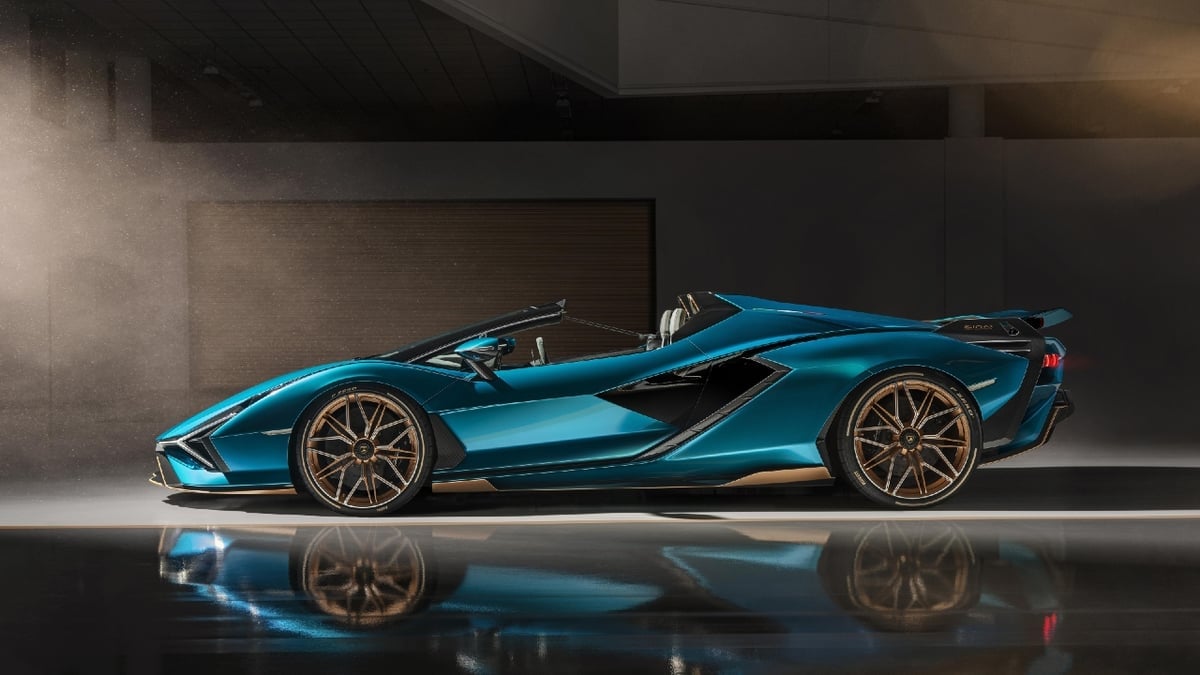
Italian supercar manufacturer Lamborghini is famed for its violent wedge-shaped, attention-grabbing designs, so it is perhaps no surprise that the brand is using additive manufacturing to develop components for the next generation of its products.
Lamborghini’s latest creation is the Sián, a limited production $3.7-million hybrid supercar. It’s the fastest car Lamborghini has ever put together, capable of well over 200 mph, but it also features some pretty fancy tech too, and 3D printing of course. In the Sián, 3D printed parts enable different designs on the air intakes for the coupe and roadster versions, something Lamborghini says might not have been possible with previous tooling methods.
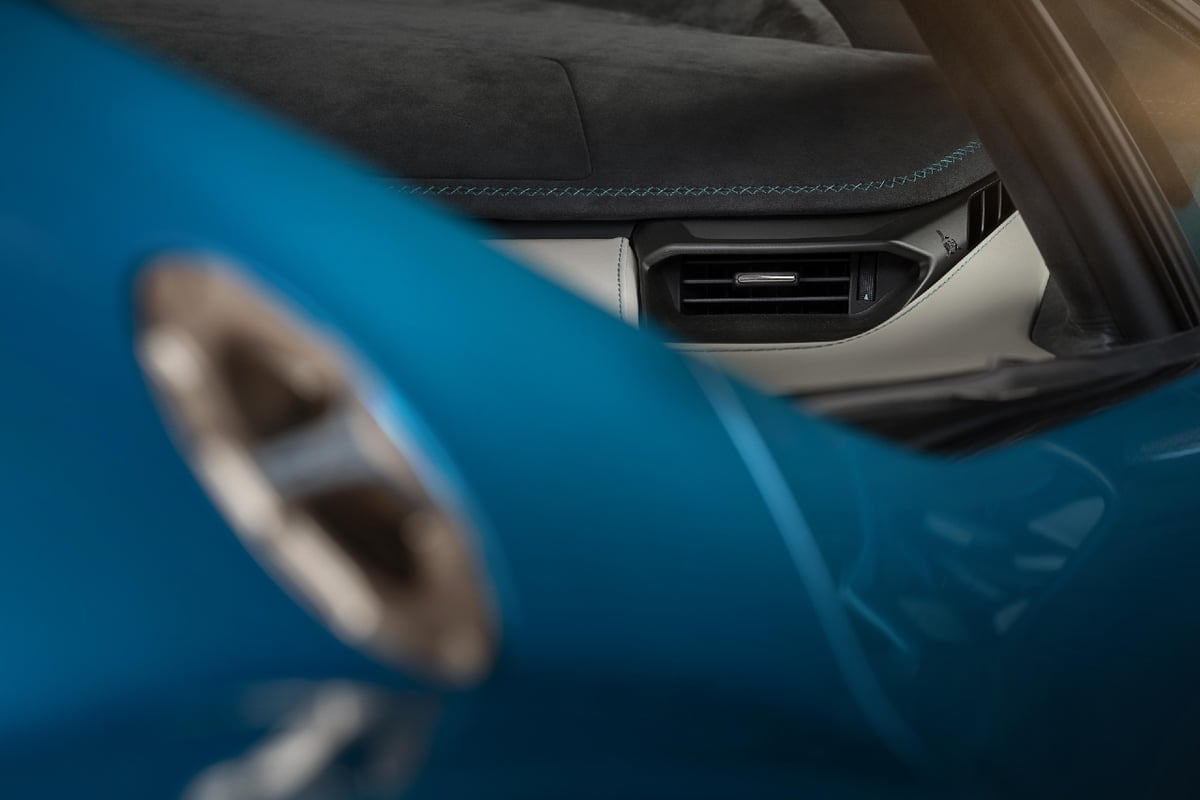
Lamborghini is known to have been working with 3D printing company Carbon and claims to have used two materials to 3D print parts for the Sián, PA12 and EPX 82. Together the two companies have also collaborated on producing components for the Urus SUV. Volkswagen, Lamborghini’s parent company, is also thought to have had a hand in helping to develop these components.
All cars are now sold, but if you were lucky enough to get your application accepted then you might have also had your initials ingrained into the 3D printed air vents in the cockpit.
Porsche – 3D Printing Engine Pistons
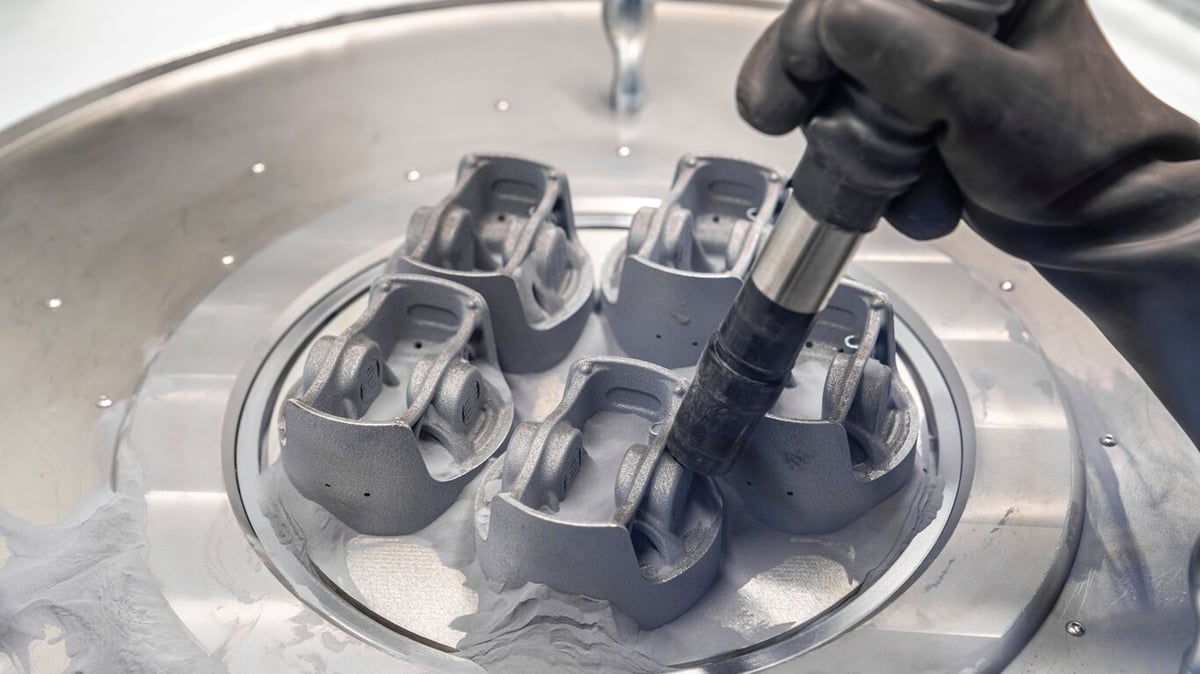
Porsche had a big 2020 with regard to additive manufacturing and developed what turned out to be one of the 3D printing achievements of the year.
In what’s understood to be a world first, Porsche 3D printed a set of six pistons for what is perhaps the ultimate form of its legendary flat-six engine – the one found in the 911 GT2 RS. The pistons then underwent a 200-hour examination including a simulated 24-hour race on a high-speed circuit that consisted of 6,000 km at an average speed of 250 kph. All pistons passed this grueling test.
That’s not the end of the story though, as it was found that the pistons were 10% lighter than the standard-fit forged set, and were able to run at higher stresses, enabling Porsche engineers to extract around an extra 30-horsepower.
This news is particularly meaningful to Porsche and the cars with which it pushes the boundaries of performance, as the firm and its partners believe innovation with forged pistons is now almost entirely exhausted. On top of that, this method of production for prototyping engine pistons is also around 30% quicker.
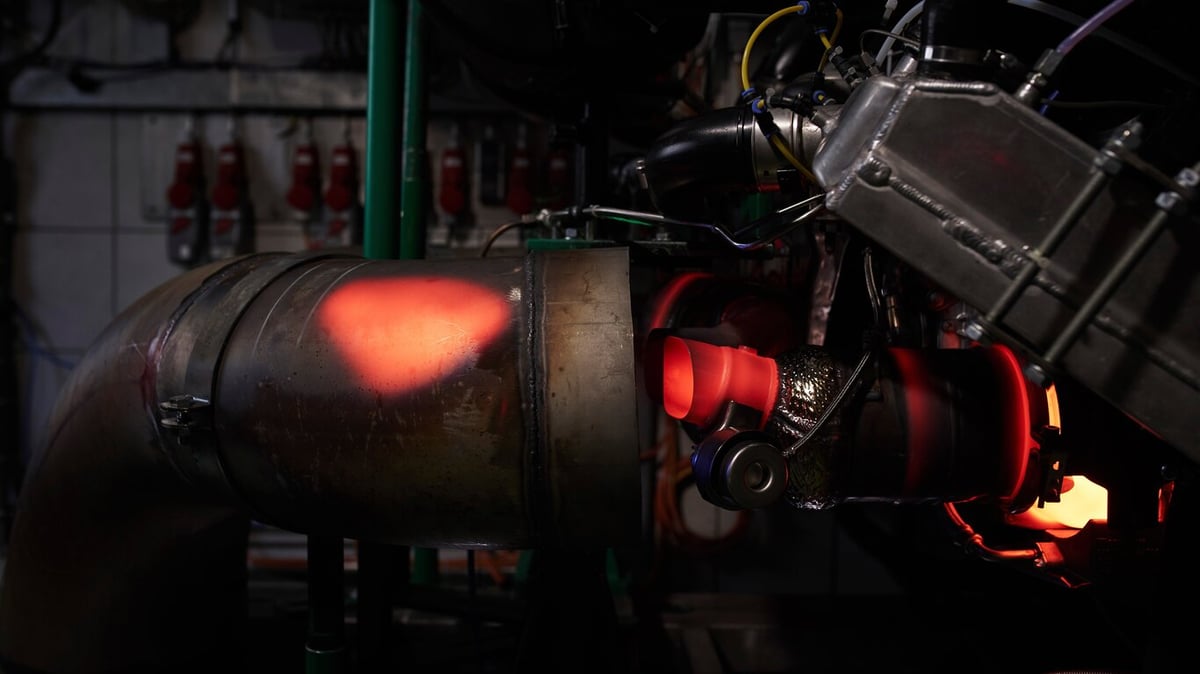
The pistons themselves were made in collaboration with partners Mahle and Trumpf, with the former responsible for the development of the powdered aluminium alloy (M174+) used in production, and the latter’s “TruPrint 3000” machines and its laser metal fusion process (LMF) responsible for the printing of the pistons.
“…I am certain that additive manufacturing will be an established part of automotive development and production in 10 years’ time at the latest,” sasys Frank Ickinger of Porsche’s Advance Drive Development Department. Exciting times, to say the least.
That wasn’t Porsche’s only 3D printed achievement of 2020. Stuttgart’s finest teamed up with SLM Solutions Group and put the latter’s huge 600 cubic millimeter metal printer to the test to 3D print a complete E-drive powertrain housing. The part passed testing procedures, proving itself as a component and delighting Porsche and SLM Solutions Group, who view the print as another big step towards the full industrialization of additive manufacturing.
Renault – 3D Printing For Reconditioned Cars

Renault has been in the automotive business since the embers of the 19th century and is no stranger to innovation and progress. In 2020, the French giant announced that it would be building a “Re-Factory” at its large Flins site located to the west of Paris.
The facility could well be the first of its kind anywhere in the world, a plant where second-hand cars are reconditioned, resources recycled, and green energy produced. It’s an innovative idea, but where does 3D printing come in?
Well, a key part of Renault’s plan requires 3D printers. From September 2021, 45,000 second hand cars will be reconditioned each year and not all of them will have parts still in production elsewhere. 3D printers will take on that task, producing those components so older cars with discontinued parts can continue to run well into the future.
Renault’s Re-Factory is expected to be gradually expanded between 2021 and 2024.
Rolls-Royce – 3D Printing for Art and Engineering
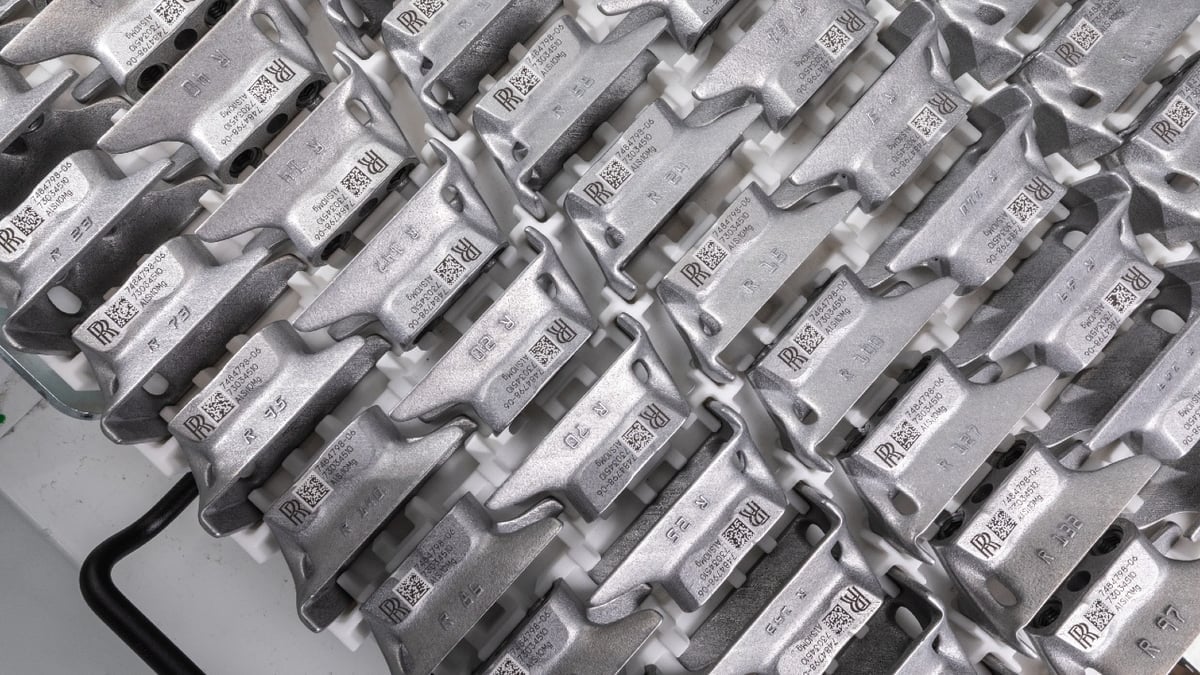
Rolls-Royce produces what many consider to be the finest luxury vehicles in the world. From its factory on the grounds of the historic Goodwood Estate in England, Rolls-Royce builds customised, high-end cars commissioned by some of the world’s wealthiest and most powerful individuals. Its models are often named after spirits and include the Ghost, Phantom, and Wraith.
In the last couple of years, Rolls-Royce has seen demand for bespoke parts skyrocket, and it is common to see cars roll out of Goodwood boasting truly unique features. Back in 2019, Rolls-Royce 3D printed what it claimed was the largest piece of 3D printed stainless steel ever fitted to a production car. It was coated in 24-carat gold before being fitted to a very special Phantom model known as the “Digital Soul” that was created in collaboration with Munich-based designer Thorsten Franck.
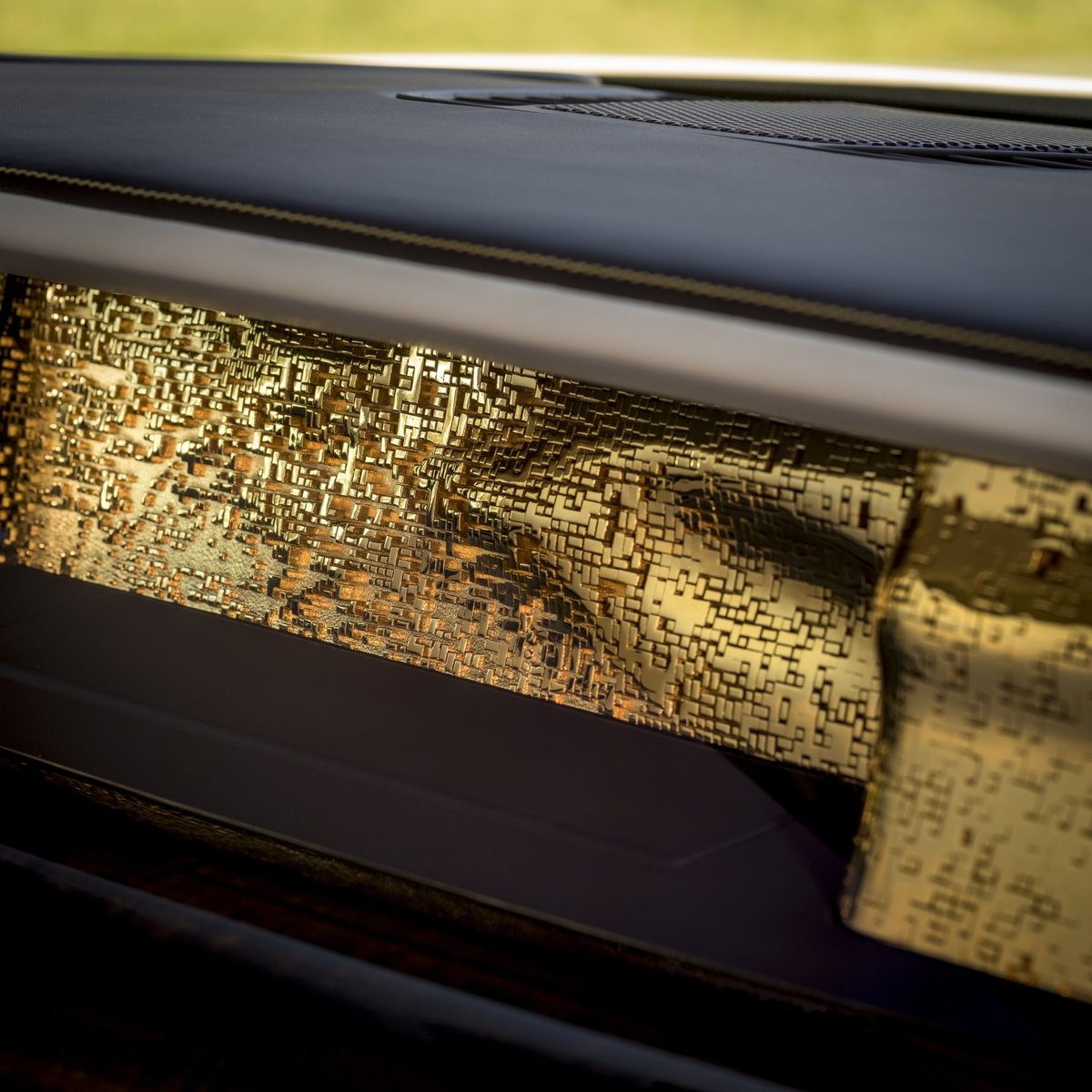
3D printing naturally suits the more artistic side of Rolls-Royce production, but it is also used to great effect in less visible areas too. The company is part of the BMW Group, and the latter has invested heavily in additive manufacturing.
At BMW’s brand new Additive Manufacturing Campus North of Munich, both metal and polymer 3D printed components are produced for Rolls-Royce using multi-jet fusion and selective laser sintering technology. These parts are said to be highly functional and rigid and are used in the body and passenger cell of Rolls-Royce models. Using this technology, Rolls-Royce created complex shapes that allowed the firm to build the extended wheelbase version of its Ghost model, adding an extra 170 mm more length over the standard Ghost.
Whether functional or artistic, additive manufacturing at Rolls-Royce clearly plays a big role in the production of some of the world’s finest automobiles.
Tesla – Model Y Focus
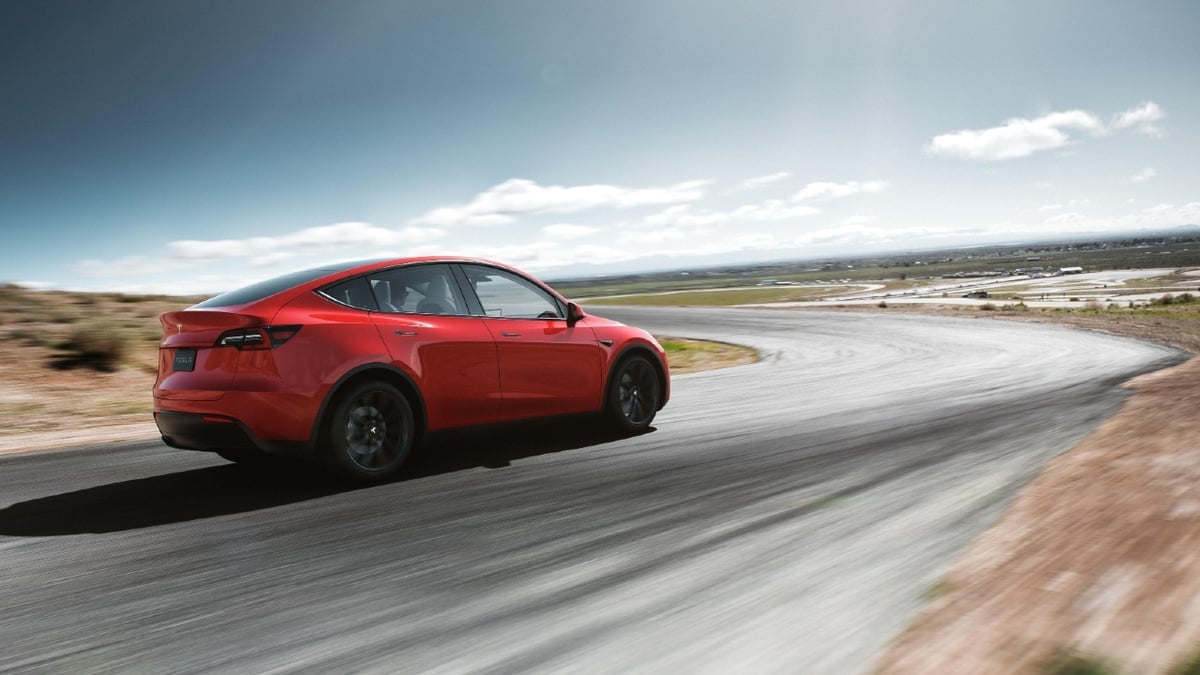
American electric vehicle manufacturer Tesla is said to be many years ahead of other manufacturers in terms of EV technology, but it’s pretty quiet on the 3D printing front over at Tesla. Only a couple of stories have come out in 2020 regarding how the technology is being used at this innovative company. Earlier on in 2020, it was discovered that Tesla had used a 3D printed part in its Model Y models to cover a manufacturing fault in the car’s HVAC system.
Towards the end of the year, Tesla also began to place job postings for roles at its Gigafactory in Nevada, specifically seeking applicants with experience in additive manufacturing for its 3D printing department the company itself described as “rapidly growing”.
2020 also saw Tesla experiment with a 3D printed prototype part for a rear underbody component of its Model Y. In the Model 3, this assembly consists of 70 metal parts, but Tesla’s prototypes showed off a huge print consisting of just 2 pieces, and the firm apparently hopes to get this down to a single printed piece.
Tesla remains a company you just can’t take your eyes off if you’re curious about technology, and you can be confident that its talented team of designers and engineers are working on more 3D printed components.
Volkswagen – 3D Printing for Production Line

Volkswagen is one of the largest automakers in the world, and the wider-reaching Volkswagen AG holds no less than twelve brands under its wings: Bugatti, Bentley, Porsche, Seat, Škoda, Lamborghini, and motorcycle manufacturer Ducati, as well as both the commercial and passenger vehicle wings of Volkswagen itself, and commercial vehicle manufacturers Scania and MAN. The wider business encompasses 125 production plants worldwide.
At Volkswagen’s headquarters in Wolfsburg, Germany, a facility for producing 3D printed components was expanded when Volkswagen signed on with HP and GKN with a specific focus on toolmaking. It is expected that 3D printing technology will soon be used in series production for VW products, but specifics appear to still be under wraps for the time being.
One arm of the business, VW Autoeuropa, saved around $360,000 by using Ultimaker 3D printers to produce small tools for a production line based in Portugal. The 3D printed tools produced were also said to be more ergonomic and facilitate increased efficiencies in manufacturing.
License: The text of "3D Printing in the Auto Industry: The State of the Art" by All3DP Pro is licensed under a Creative Commons Attribution 4.0 International License.